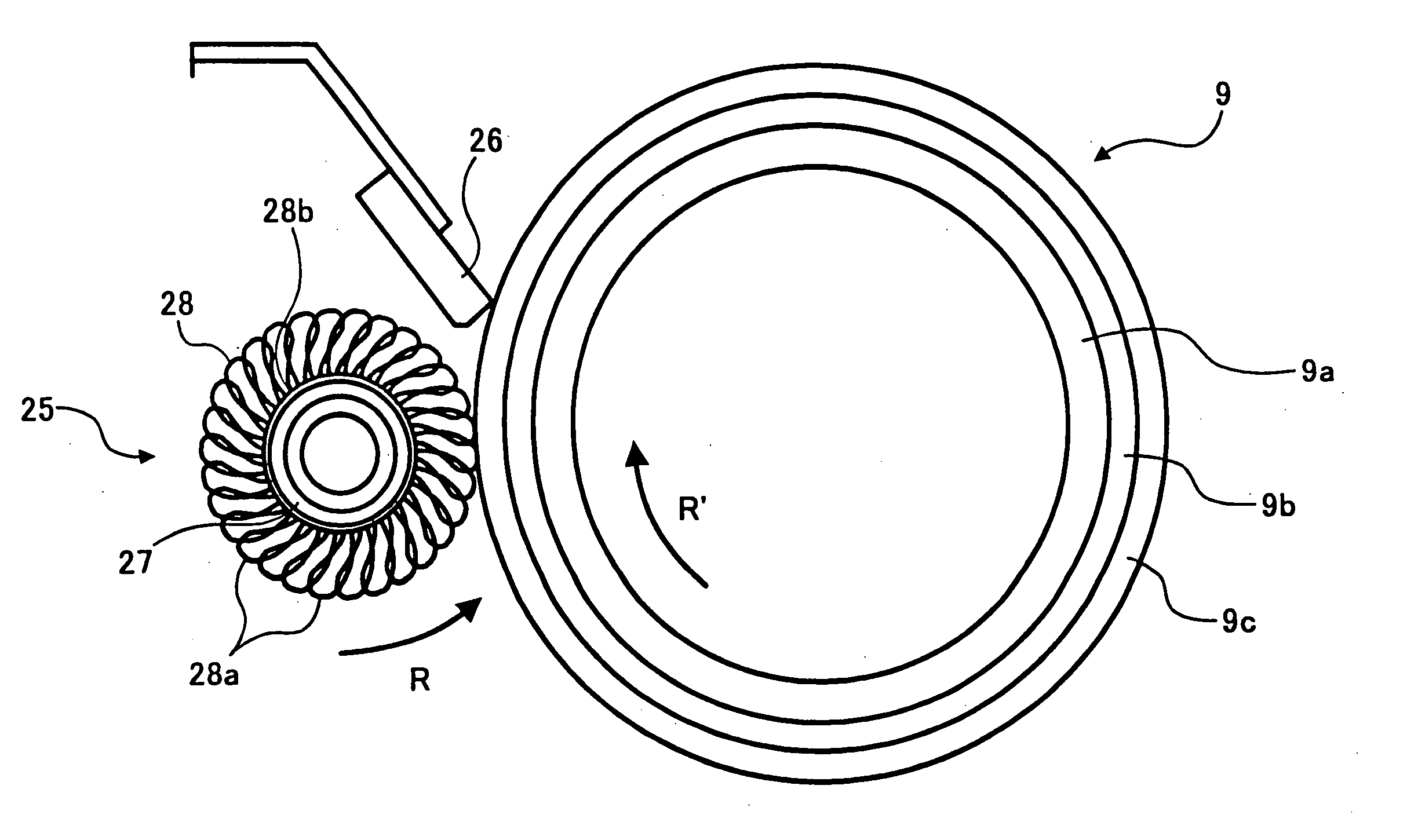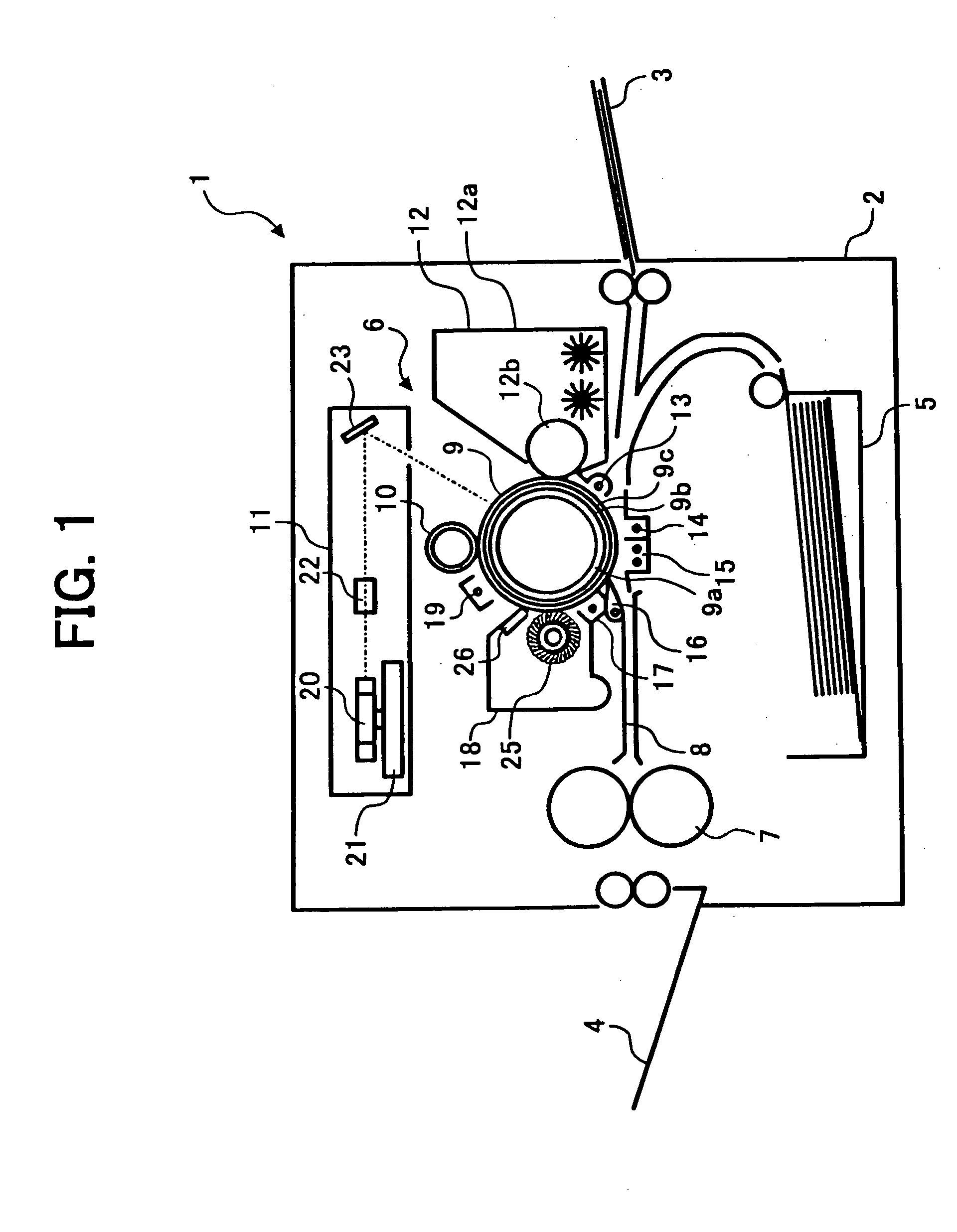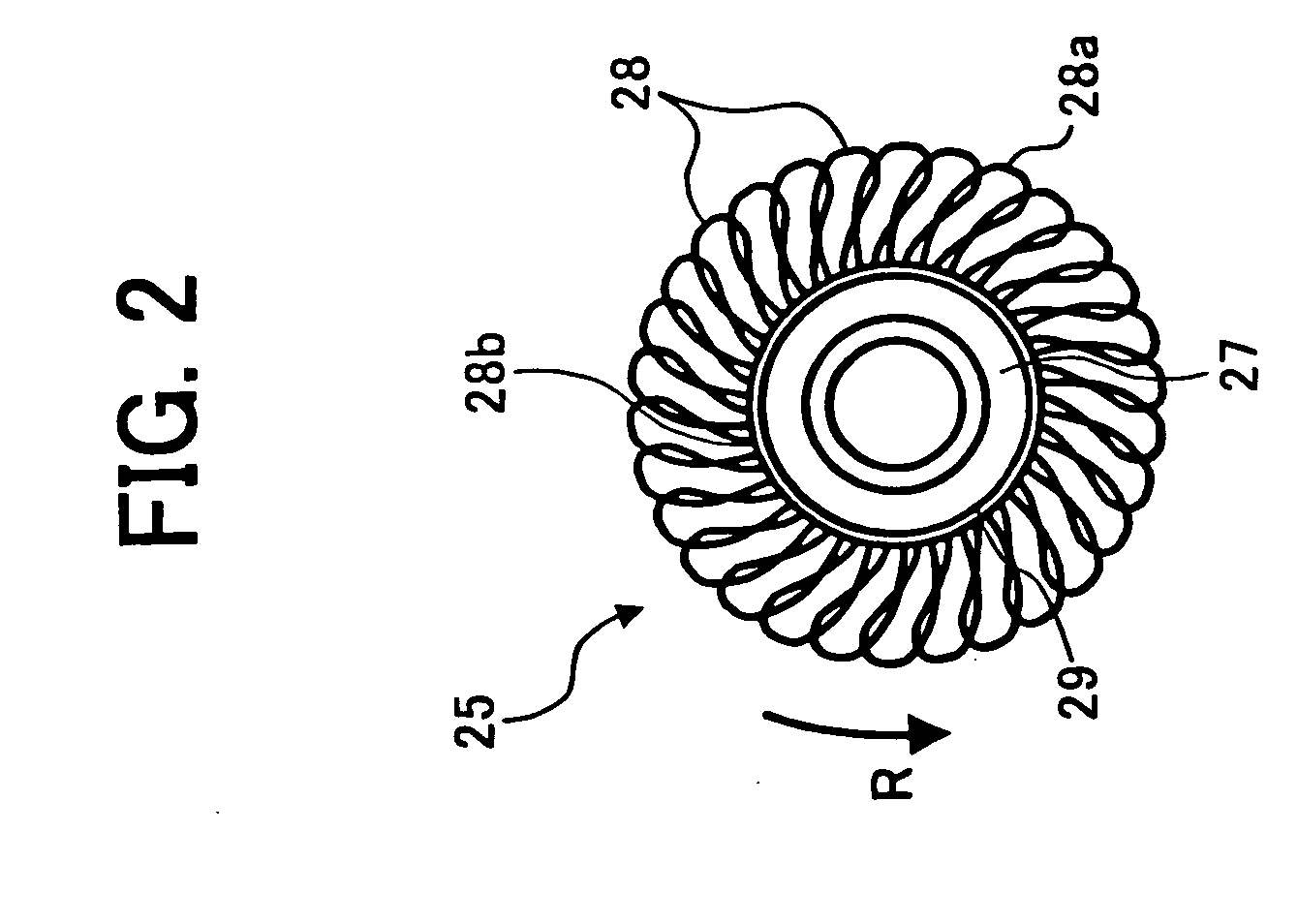Image forming apparatus and copier
a technology of image forming apparatus and copier, which is applied in the direction of optics, instruments, electrographic processes, etc., can solve the problems of deterioration of image quality, abnormal image deterioration, and increase of light portion potentials of photoreceptors, so as to prevent production and prolong life
- Summary
- Abstract
- Description
- Claims
- Application Information
AI Technical Summary
Benefits of technology
Problems solved by technology
Method used
Image
Examples
example 1
[0099] A printer in Example 1 includes a photoreceptor prepared by the following method.
[0100] After an intermediate layer coating liquid prepared by mixing and pulverizing with a ball mill the following components 10 was coated by a dip coating method on an electroconductive substrate which is an aluminium drum having a diameter of 100 the coated substrate was heated and dried to have an intermediate layer having a thickness of 3.5 μm.
Intermediate coating liquidAlkyd resin (Bekkosol 1307-60-EL from6Dainippon Ink & Chemicals, Inc.)Melamine resin (Super Bekkamin4G-821-60 from Dainippon Ink & Chemicals, Inc.)Titanium oxide40(CR-EL from Ishihara Sangyo Kaisha, Ltd.)Methyl ethyl ketone200
[0101] After a charge generation layer coating liquid prepared by mixing and dispersing with a ball mill the following components was coated on the intermediate layer, the coated substrate was heated and dried to have a charge generation layer having a thickness of 0.2 μm.
Charge generation layer co...
example 2
[0108] The procedures of preparation for the printer in Example 1 were repeated to prepare a printer in Example 2 except for changing the formulation of the protection layer coating liquid as follows.
Protection layer coating liquidPolycarbonate (Z-polyca from TEIJIN CHEMICALS LTD.50.6having a viscosity-average molecular weight of 50,000)Alumina2.7(Sumitomo Chemical Co., Ltd.)Disperser0.03Antioxidant0.31Charge transport material35.4having the formula (1)Cyclohexanone411.9Tetrahydrofuran1,467.2
example 3
[0109] The procedures of preparation for the printer in Example 1 were repeated to prepare a printer in Example 3 except for changing the formulation of the protection layer coating liquid as follows.
Protection layer coating liquidPolycarbonate (Z-polyca from TEIJIN CHEMICALS LTD.18.4having a viscosity-average molecular weight of 50,000)Alumina10(Sumitomo Chemical Co., Ltd.)Disperser0.1Antioxidant0.64Charge transport material12.9having the formula (1)Cyclohexanone166.7Tetrahydrofuran660.2
[0110] Subsequently, after 500,000 images and 1,000,000 images were produced by the printers prepared in Examples 1 to 3, the following items were evaluated.
[0111] Respective solid image densities; local defects such as black spots, white spots, black stripes and white stripes; and abnormal images such as background fouling were evaluated in a comprehensive manner and classified to three stages, i.e., “good”, “slightly poor” and “poor”.
[0112] Irradiated part potential of each photoreceptor when ...
PUM
 Login to View More
Login to View More Abstract
Description
Claims
Application Information
 Login to View More
Login to View More - R&D
- Intellectual Property
- Life Sciences
- Materials
- Tech Scout
- Unparalleled Data Quality
- Higher Quality Content
- 60% Fewer Hallucinations
Browse by: Latest US Patents, China's latest patents, Technical Efficacy Thesaurus, Application Domain, Technology Topic, Popular Technical Reports.
© 2025 PatSnap. All rights reserved.Legal|Privacy policy|Modern Slavery Act Transparency Statement|Sitemap|About US| Contact US: help@patsnap.com



